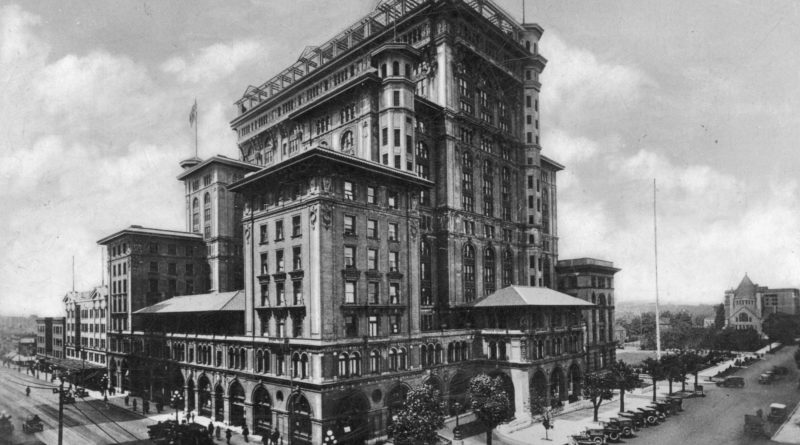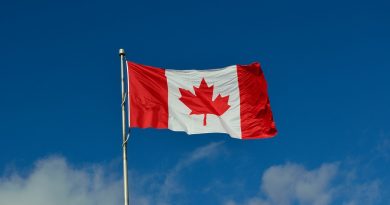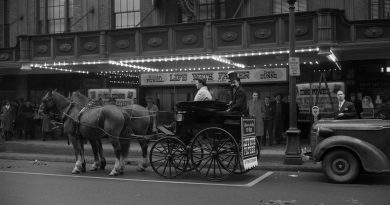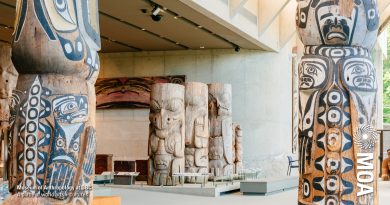1913
Above: C. P. R. Hotel, Vancouver, B.C.
[Image: Vancouver City Archives CVA 677-21]
*****************************************
You’ll note that these years include events listed under “Also in . . .” These are events for which we don’t have a specific date. If YOU know the specific date of an event shown there, please notify us . . . and cite the source! Many thanks!
*****************************************
January 1 Joe Philliponi (born Filippone), nightclub owner, was born in Italy.
January 31 Prisoner Joseph Smith, who had killed guard J.H. Joynson in 1912, was executed at the B.C. Penitentiary, the first and only hanging there. (Most executions occurred at Oakalla.)
January The North Shore Press newspaper began publishing.
February Vancouver city police, who had agitated for a six-day week in 1910, tried again. Again, their request was shelved, and they continued to be on duty seven days a week.
March 7 Poet Pauline Johnson died of breast cancer at age 52 in the Old Bute Street Hospital, Vancouver. She was born March 10, 1861 on the Six Nations Indian Reserve near Brantford, Ontario. Her father was George Johnson, a Mohawk, the chief of the reserve. Her mother was Emily Johnson, a white woman from a wealthy family who had come to Canada from England as a young girl.
The Women’s Canadian Club began raising funds for a cairn in Stanley Park, which marks the resting place of the Mohawk poet’s ashes. (Johnson apparently specified in her will that no memorial be raised.) There is a good illustrated biography here. A portion of it reads: “All flags in Vancouver flew at half-mast the day she was buried. Her funeral procession included all of the city’s distinguished men and women, and representatives from every society and club. A large group of Indians with their chief, the son of Pauline’s friend Chief Joe Capilano, walked near the end of the procession. Before her death, Pauline had asked to be buried in Stanley Park, her favourite place in Vancouver. She is the only person who has ever been buried in the park.”
Also March 7 Port Moody was incorporated as a city. Civic elections were held April 3. P.D. Roe, the owner of a local sawmill, was elected the first mayor by acclamation.
March 17, 1913 The Vancouver Opera House, which opened in 1891, reopened as the Orpheum (not the present one) with vaudeville acts. (In July of 1935 it will become the Lyric with talking pictures.) The building stood where Sears is today on Granville Street.
March 19 Ben Wosk, furniture merchant, was born in Vradiavka, near Odessa.
“Early in 1913”
Construction on one of Vancouver’s most beautiful (and now vanished) buildings, the second Hotel Vancouver, began early in 1913. The April 25, 1914 issue of Engineering Record gave some of the details. “The original wood-frame building,” says the article—referring to the first Hotel Vancouver, which had opened for business in 1888—”had been from time to time extended by additions until it covered an area of about 60,000 square feet, on most of which the structure stood five storeys high.
“In designing the new hotel, limitations were put on the work by two conditions: First, a city ordinance had just been passed placing the maximum height of buildings at 120 feet with the allowance of a tower eight storeys higher covering one-third the ground area; and second, the railway company [the hotel was owned by the CPR] required that the business of the hotel should not be interfered with during the construction period.”
The public library’s Building Registry indicates that the hotel’s height of 120 feet was exceeded by 108 feet, thanks to that eight-storey addition, for a total height of 228 feet [68 metres]. The building’s stepped construction resulted in just 44 of the hotel’s 500 rooms being without an exterior view.
“The new Hotel Vancouver,” Engineering Record concluded, “was designed by Francis S. Swales, of Painter & Swales, architects (a New York firm) . . . The contract for the construction is held by Skene & Christie, of Vancouver.”
Building this big beauty took well over two years. It opened to the public in 1916.
April 11 Vancouver’s “Mr. Showbiz,” Hugh Pickett, was born in Vancouver.
April 17 Baseball’s Athletic Park was dedicated. Bob “Mr. Baseball” Brown built a fine wooden ballpark at the southeast corner of Fifth and Hemlock. 6,000 fans filled every seat to watch the Vancouver Beavers beat the Tacoma Tigers 8-4. The first admission prices were 25 and 50 cents.
April 18 The City of Port Coquitlam celebrated Inauguration Day, marking its incorporation as a city, breaking away from the District of Coquitlam. Its population of 1,500 took as its motto By Commerce and Industry We Prosper. The first mayor was James Mars. Coquitlam lost a bit more of its territory as tiny Fraser Mills also broke away.
April 22 Vancouver’s Rotary Club was organized, with 94 members. It was the first Rotary Club in the area, and only the third in Canada.
April Artist Emily Carr rented Vancouver’s Drummond Hall and showed 200 paintings before returning to Victoria to live on family property.
May 16 An Act of Parliament created the Vancouver Harbour Commission. The first commissioner was Frank Carter-Cotton.
May The North Vancouver Rowing Club was launched.
May 27 The Capilano light was installed on the north side of the entrance to Vancouver harbour. It was destaffed in 1946 and replaced with a beacon.
June 18 The Fraser Valley Milk Producers Association was formed. Today it’s Dairyland.
June 28 Says the Vancouver World in today’s edition: “Throwing open its doors this week to the travelling public, the Hotel Connaught, one of Vancouver’s very finest hostelries, was at once favored with the support which so fine a place really deserves. And the hotel really is good.” Today, the Connaught is known as the Historic Ramada West Pender.
July 12 The Pacific Highway opened. It ran from the Fraser River bridge to the U.S. border. A new Customs Office opened at the border, in a tent. Later, a permanent wooden building will be constructed. The highway was paved in 1923.
July 31 Alys Bryant, a visiting American aviatrix, was the first woman in Canada to make a solo flight. She flew at Minoru Park in Richmond.
Also July 31 Samuel Brighouse, Vancouver and Lulu Island pioneer (he was one of the “Three Greenhorns”) died.
July North Vancouver’s City Hall at First and Lonsdale was remodelled as a Post Office. Council moved to temporary quarters in the Keith Block.
August A slide at Hell’s Gate prevented a record sockeye run from reaching its spawning grounds. Massive amounts of rock were accidentally blasted into the Fraser River during construction of the Canadian Northern Railway.
September 8 Bill Miner, the “Grey Fox,” died in a Georgia prison.
September 12 Singer/entertainer Thora Anders was born in Victoria.
September 19 Impresario Gordon Hilker was born in Vancouver.
September The recently paved “Vancouver Road” was renamed Kingsway and opened with great fanfare and a parade of automobiles. A local newspaper wrote, on October 1: “The new highway between Vancouver and New Westminster passing through South Vancouver and Burnaby is now complete . . . It is a broad, magnificent road, and by none will it be more appreciated than motorists, who, to the number of six hundred, made the trip between the two cities on the day the road was opened. There is a famous London highway of this name, and it is thought our Kingsway is named for that one.”
October 13 Journalist and newspaper executive Stuart Keate was born in Vancouver. His early life, the opening pages of his autobiography Paper Boy, is a really interesting look at the Vancouver of this era.
November 3 The Alcazar Theatre opened at 639 Commercial Drive with the comedy “Too Much Johnson.” Later it will be renamed the York Theatre.
November 8 The doors of the “elegant and vast” new Birks store opened at Georgia and Granville. An advertisement cited the name of the managing director, George Trorey, reminding us that when Birks came to Vancouver in 1907 they purchased his jewelry shop at the northeast corner of Hastings and Granville . . . and with it the famous clock.
December 4 An Ayrshire cow, “Flossie,” was given an award by the Canadian Ayrshire Breeders Association for producing 11,655 lbs of milk and 446 lbs of butterfat over 314 consecutive days. Flossie was owned by the Shannon Brothers of Cloverdale.
December 6 Jonathan Miller III, a Vancouver pioneer (first constable, first postmaster), died at age 79.
Also in 1913
A general financial depression began. The frenetic pace of building of recent years ground to a halt.
Frank Wesbrook became the first president of the University of British Columbia.
The World Building (now known as the old Sun Tower) was completed.
Conservative Hall, later called Dundarave Hall, was built on Marine Drive in West Vancouver and used for community social activities. It has also served as a cabaret, a church, a furniture store and restaurant.
The Campbell River Lumber Company, with about 250 workers, built a mill in White Rock about a mile east of the railway station.
West Vancouver built a ferry terminal at the foot of 14th Street. In 1989 it became a designated heritage structure with exhibition space for community displays.
C.H. Cates Ltd. was incorporated. Cates Tugs was controlled by the Cates family until 1992, when it was bought by U.S. entrepreneur Dennis Washington, owner of the Montana-based Washington Corporation.
Hollyburn School opened, the first purpose-built school in West Vancouver.
Natives of Kitsilano Indian Reserve sold its 29 hectares to the Government for $218,750. The land was valued at $2 million when divided into residential lots.
Businessman Philip Gilman built a grand mansion on Jericho Beach. Known today as “Brock House,” it operates as a seniors’ centre next to the Royal Vancouver Yacht Club.
Granville Island, once a mud flat, reached island status this year through the miracle of dredging.
Construction started on the first Georgia Viaduct. Its official name was the Hart McHarg Bridge, for a World War I hero, but the name didn’t last.
The Credit Foncier Building at 850 West Hastings opened.
The stern-wheeler Skeena was providing daily service to Wigwam Inn at the head of Indian Arm.
Hollyburn School opened, the first purpose-built school in West Vancouver.
Delta built its second municipal hall.
John Lawson served as the second reeve of West Vancouver.
The name of Barnard Street, after Sir Frank Stillman Barnard, Lt.-Gov. Of British Columbia, was often confused with Burrard, and so was changed to Union Street.
Lord Tennyson School opened at West 10th and Cypress.
David Livingstone Elementary, named for the Scottish explorer and missionary, opened with eight classrooms.
The Pacific Great Eastern Railway, now BC Rail, began its line from North Vancouver to Prince George.
Streetcar service connected Vancouver to North Burnaby.
The Hudson’s Bay erected a new building at Georgia and Granville to replace the 1898 structure. This one is the familiar white building, but not as big as the current Bay at that corner. More will be added in later years.
The Bank of Commerce opened a branch at 859 Granville.
Taylor Manor was built at 951 Boundary Road.
St. Mary’s Church began at 2498 West 37th Avenue in Kerrisdale.
Truman Smith Baxter was mayor of Vancouver.
The 11th Regiment, Irish Fusiliers of Canada was formed.
The Zionist and Social Society was formed.
Eric Hamber became president of Hastings Sawmills Co.
The Sandheads #16 lightship went into service at the mouth of the Fraser River. It had been built in 1880 as the two-masted schooner Thomas F. Bayard, and in 2004 awaits major restoration at the Maritime Museum.
Huge crowds turned out at Shaughnessy Golf Club to watch Harry Vardon play. Vardon was the only six-time winner of the British Open.
Queen’s Park in Burnaby was renamed Confederation Park to commemorate Canadian Confederation. The park is at Willingdon and Penzance.
Author/journalist Peter Stursberg was born in China.
Edgar George Baynes built the Grosvenor Hotel, then became the manager.
Future artist B.C. Binning, aged 4, arrived with his family in Vancouver from Medicine Hat, Alberta.
Fred Deeley, Sr. arrived in B.C. in 1913, representing the Birmingham Small Arms, manufacturer of BSA motorcycles.
Cyclone (Frederick) Taylor joined the Pacific Coast Hockey Association, giving the new league the credibility it needed. He would play for Vancouver until his retirement in 1921. One of the great hockey players, he scored 194 goals in 186 games.
Gordon Wismer, a future attorney-general, began his law practice in partnership with Gerald G. (Gerry) McGeer.




